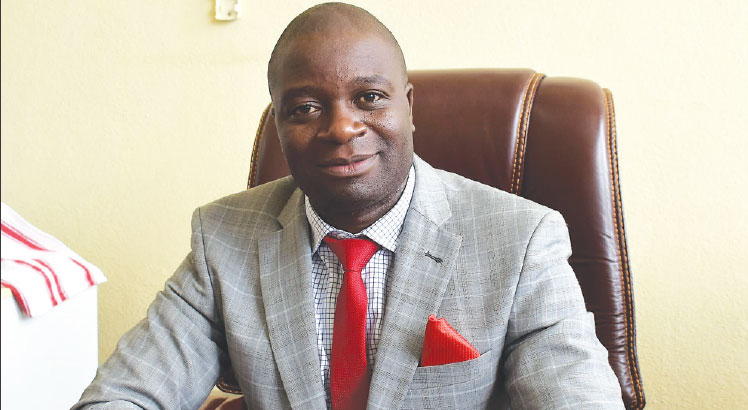Stakeholders ask govt to revise health strategy
In Monday’s edition of The Nation we started analysing the implementation to date of the five-year Health Sector Strategic Plan II for the period 2017 to 2022. The first three stories in the series exposed how a weak financing model, overdependence on donors and poor infrastructure are not helping matters in as far as implementation is concerned. There was further analysis on how the absence of district hospitals in cities is denying urban populations access to primary health care. Today, we look at the issue from yet another perspective:
Stakeholders have challenged government to revise its ambitious 2017-22 Health Sector Strategic Plan II (HSSPII), saying the country will not achieve the set projections mainly due to economic constraints and lack of political will.
HSSPII is a public health sector medium-term plan developed by the Ministry of Health (MoH) and its donor partners. It comprises eight key strategies for addressing inequalities that hinder Malawians from attaining universal coverage of basic health care in public health facilities.
But with just about a year to the expiry date, government seems to have failed to achieve many key targets, including reducing the vacancy rate in the public health service currently at around 50 percent and construction of four district hospitals to ease pressure on the country’s main referral hospitals.

Speaking in an interview last week, Malawi Health Equity Network (Mhen) executive director George Jobe said failure to implement HSSPII has led to increased challenges such as lack of access to good health facilities and quality health services which fuels negligence in public hospitals.
He also bemoaned what he described as longstanding deficiencies in terms of political will by past and present leaders that has constantly seen Parliament allocating meagre finances to the Health budget.
Said Jobe: “Even under the HSSPII, the allocations are not at par. We are not meeting what we projected to meet because the finances are quite low and we cannot construct quality health facilities as envisaged in this plan.”
Local civil society and non-governmental groups also participated in the development of HSSPII which currently also guides resources and builds on the successes of the previous plan while addressing areas where HSSPI targets were not met or progress was slow.
When former president Bingu wa Mutharika died in April 2012, there was an urgent recommendation to construct a military hospital to handle different cases, including full-size emergencies. But the proposal remains a white elephant while government continues to spend billions of kwacha in external medical referrals.
“We have been sending patients outside the country, but we do not want to invest in similar local health facilities. It is like someone somewhere in government benefits from these external referrals. We must stop this,” Jobe said.
When quizzed to mention how much progress HSSPII has registered since its launch in 2017, MoH director of planning and policy development Kate Langwe could not quantify the strides apart from just saying “a lot has been achieved”.
She, however, said the Covid-19 pandemic affected progress of the implementation process, adding that the ministry is conducting a midterm review on the HSSPII which was deferred last year due to the pandemic. The results are expected to be released in January 2021.
In a written WhatsApp response, Langwe said: “There has been a consistent decline in completeness throughout 2020. Community health indicators have had sharp decreases potentially due to service stoppages and reductions of 12-15 percent in the total number of consultations between April and July 2020.”
Commenting on the yawning vacancy rate in government healthcare facilities, MoH director of human resource management and development Duff Msukwa said the ministry is trimming down human resource capacity gaps across all public hospitals.
He also said MoH has already cut the vacancy rate from 52 percent in 2018 to 50 percent, adding that the figure will go down further once the ministry receives recruitment funds from Capital Hill for the 2020/21 financial year.
Msukwa said: “We were allocated K500 million from the government in the 2019/20 financial year for the recruitment of healthcare workers. Out of those resources, we managed to recruit 741 healthcare workers for central hospitals, district hospitals and those run by the Christian Health Association of Malawi [Cham].”
He said Global Fund allocated money for recruitment of about 700 healthcare workers, adding that so far a total of about 1 420 healthcare workers have been recruited with additional personnel employed from the government recruitment fund reserve list.
Government earlier also provided additional resources to MoH to recruit about 2 000 health care workers to compliment the country’s Covid-19 response, but a verification exercise by MoH and the Ministry of Local Government established that some recruits resigned, died or absconded duty.
The 2016 Human Resources for Health (HRH) report indicates that before the adoption of HSSPII, MoH had about 23 188 personnel out of the existing 42 309 positions in the public health sector staff establishment, representing a 45 percent vacancy rate.
Among others, the HRH showed that only 17 298 positions out of the 25 755 established positions were filled in the frontline categories of medical, clinical and nursing officers, nurse midwife technicians, medical assistants, pharmacy and lab technicians and health surveillance assistants, leaving a vacancy rate of 8 457, representing 33 percent.





